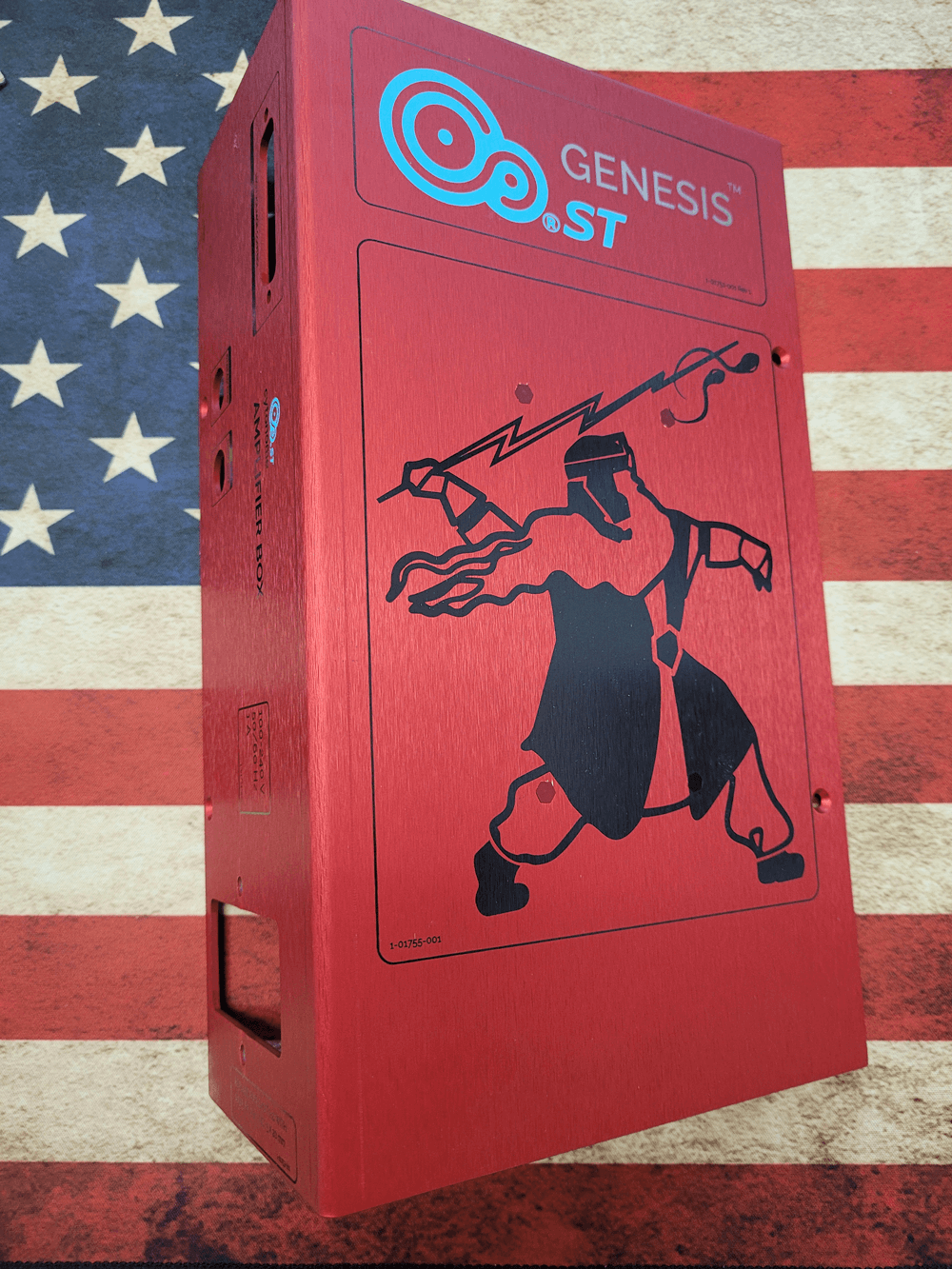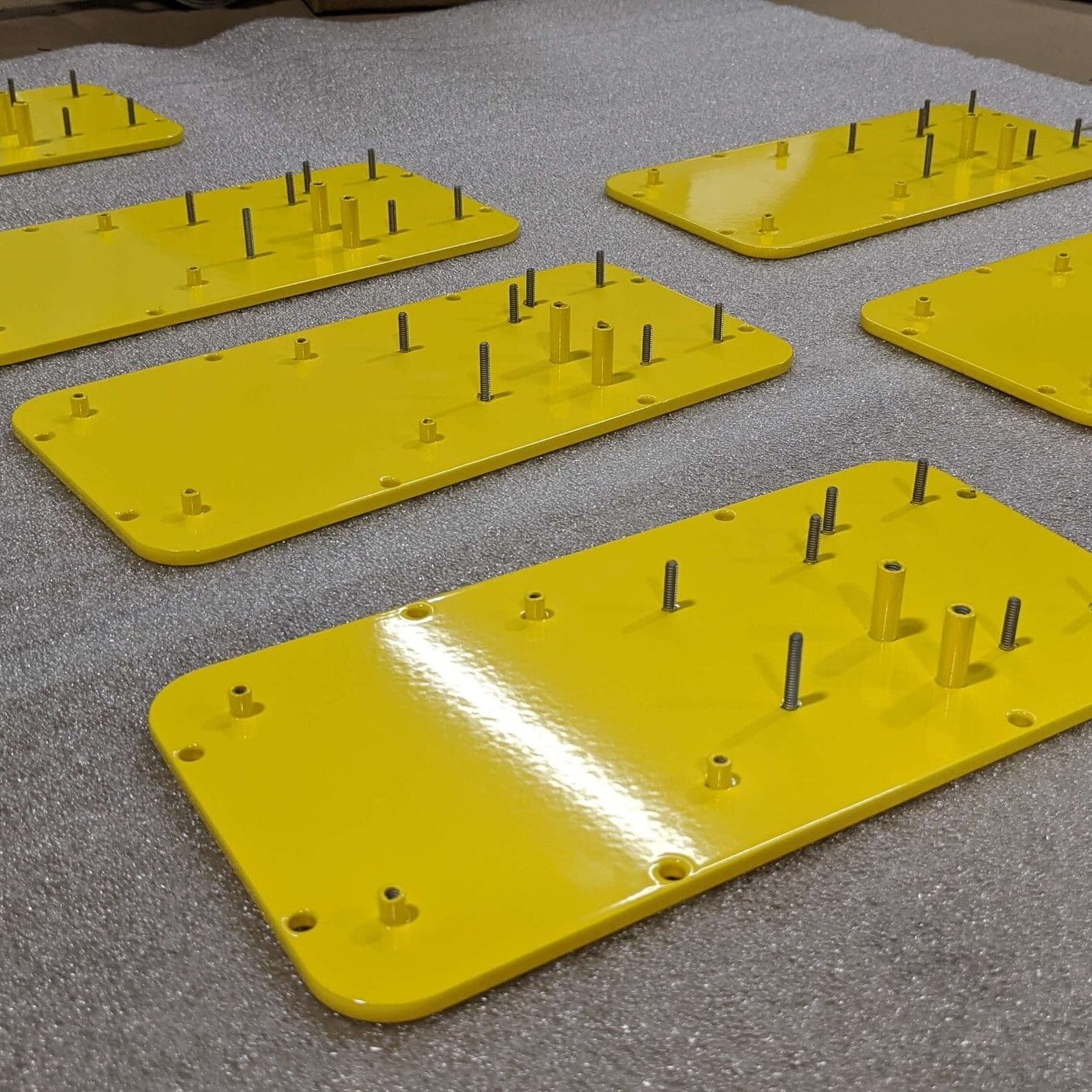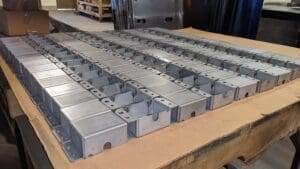Last updated on May 20th, 2025 at 07:40 am
Metal finishing is a crucial last step in the sheet metal fabrication process. Finishing improves the aesthetic appearance of a part and reduces surface roughness for parts that need to mate or seal. It also provides extra durability and protection.
At Approved Sheet Metal, our finishing options include plating (anodizing and chromate) and powder coating. Here’s a quick overview of each option:
Table of Contents
- 1 Finishing Options: Anodize, Chromate, and Powder Coating
- 2 Functional Performance Comparison
- 3 Which Finishing Process to Use for Your Custom Metal Fabrication
- 4 6 Tips for Designing Powder Coated Sheet Metal Parts
- 5 Sheet Metal Fabrication Finishing Options FAQ
- 5.0.1 What is the purpose of metal finishing in the sheet metal fabrication process?
- 5.0.2 What finishing options does Approved Sheet Metal offer, and how do they differ?
- 5.0.3 When should I choose plating (anodizing or chromate) for my custom metal fabrication?
- 5.0.4 In what situations is powder coating the preferred finishing process?
- 5.0.5 Why doesn't Approved Sheet Metal offer wet paint services for sheet metal finishing?
Finishing Options: Anodize, Chromate, and Powder Coating
- Anodizing is the process of adding a thicker, oxide layer over aluminum to protect it from rust and wear. It not only protects aluminum alloys from weather and the elements, but also provides electrical insulation. Approved Sheet Metal offers both clear and color anodizing.
- Chromate or chromate conversion coating is a chemical treatment that passivates metal for stronger corrosion resistance and electrical conductivity.
- Powder coating consists of applying dry powder (usually made out of thermoplastics) electrostatically to create a hard finish that is more long lasting than wet paint.
Functional Performance Comparison
| Property | Anodize | Chromate Conversion | Powder Coating |
|---|---|---|---|
| Corrosion Resistance | Excellent | Moderate | Excellent |
| Typical Thickness | 0.0002″–0.001″ | < 0.0001″ | 0.002″–0.006″ |
| Electrical Conductivity | Insulative | Conductive | Insulative |
| Abrasion Resistance | Good | Poor | Excellent |
| Adhesion to Base Metal | Excellent (electrochemical bond) | Chemical bond | Mechanical bond |
Which Finishing Process to Use for Your Custom Metal Fabrication
Want to know which process to use for your sheet metal fabrication? Here’s what our expert finisher recommends:

Use plating (anodizing or chromate) when. . .
- You need a corrosion resistant part
- You need an electrically conductive part
- You need a part that will withstand a high degree of wear
Use powder coating when. . .
- You need a large part. 4’x4’ is a standard size for powder coating.
- You’re pressed for time. Lead times vary depending on individual vendors, but powder coating is generally a faster process than plating.
- You need a unique color. Powder coating has significantly more color options than plating.
You may be wondering why we don’t offer wet paint services at our sheet metal shop. It’s because more often than not, wet paint is inconsistent. Powder coating provides more even layers and is more durable in the face of wear and weather.
A Quick Word on Color Matching
No matter which finishing method you choose for your sheet metal fabrication, you may want to get a test sample of your part to ensure color matching. Sheet metal fabricators use RAL codes for colors the way designers use HEX codes. If you give us a RAL code for the color you want to use, we can easily find a match for whatever finishing process we’re using.
Need finishing services for your custom metal fabrication? Send it to us! Request a quote today and we’ll respond within 4 hours.





